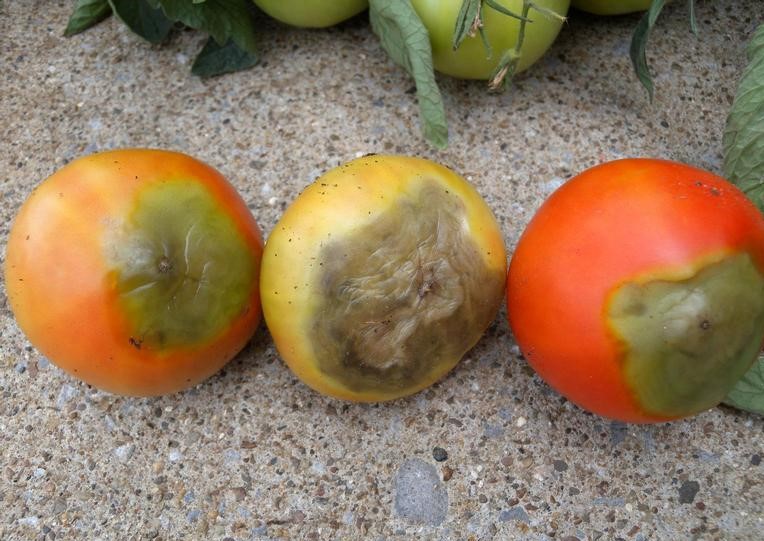Blossom End Rot
Return to Physiological Disorders
Blossom end rot appears as soft spots on the blossom end of many vegetable crops, particularly tomatoes, peppers, and squash. The soft spots turn dark brown over time and the fruit is unmarketable. The soft spots can make the fruit more vulnerable to bacteria or fungal pathogens. Blossom end rot is caused by a calcium deficiency in the fruit. This deficiency can be a result of low calcium in the soil, but is most often due to uneven irrigation, especially during high temperatures. Drought stress causes the plants to be unable to take-up and transport calcium. Excessive nitrogen fertilization can also lead to blossom end rot.

Blossom end rot on ripening tomato fruit.
(Photo: Brenda Kennedy, University of Kentucky, Bugwood.org)
Management:
- Conduct annual soil testing to ensure that soil has the proper calcium levels.
- Avoid over-fertilization of plants as excessive nitrogen causes more vegetative growth which hinders calcium transport to the fruit.
- Keep soil moisture consistent, neither too dry or too wet.
- Ventilate and keep the tunnel as cool as possible during times of high air temperatures.
- Select cultivars less susceptible to blossom end rot.
